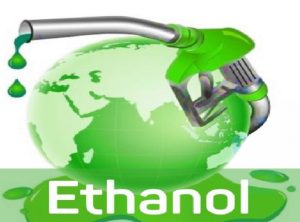What Is Ethanol Blending?

The level of ethanol blending in petrol in India has reached 9.99%.
- Ethanol is one of the principal biofuels, which is naturally produced by the fermentation of sugars by yeasts or via petrochemical processes such as ethylene hydration.
- Ethanol Blending Programme (EBP) is aimed at reducing the country’s dependence on crude oil imports, cutting carbon emissions and boosting farmers’ incomes.
- The Government of India has advanced the target for 20% ethanol blending in petrol (also called E20) to 2025 from 2030.
- By blending ethanol into gasoline, it can reduce the amount of petrol required to run a car, thereby reducing dependence on imported, expensive, and polluting petroleum.
- Today, India imports 85% of its oil requirements.
- India’s net import of petroleum was 185 million tonnes in 2020-21 at a cost of USD551 billion.
- Most of the petroleum products are used in transportation and therefore, the E20 programme can save the countryUSD4 billion annually.
- Ethanol is a less polluting fuel and offers equivalent efficiency at a lower cost than petrol.
- Availability of large arable land, rising production of foodgrains and sugarcane leading to surpluses, availability of technology to produce ethanol from plant-based sources, and the feasibility of making vehicles compliant to ethanol blended petrol (EBP) are some of the supporting arguments used in the roadmap for E20, which refers to the target as “not only a national imperative, but also an important strategic requirement”.




